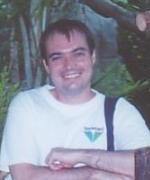
Dr. Derek Harter is currently an Associate Professor of Computer Science at Texas A&M University - Commerce. He received his Ph.D. in 2004 from the University of Memphis, and has worked before and since then as a computational scientist, applying his computing expertise to problems in AI, machine intelligence, virtual reality and computational neuroscience. His main research interests are in the area of embodied and complex dynamical theories of intelligence, and their application to machine intelligence and intelligent systems. In particular, computational methods are giving us new tools and insights into the real underlying mechanisms of human level cognition. Dr. Harter is interested in pushing the boundaries of these methods to better understand such natural cognitive systems, and apply these insights to building better intelligent systems. More information about Prof. Harter and his research can be found at http://www.derekharter.com/
Abstract:
This talk will provide an introduction to the field of graph theory and the application of these concepts to the analysis of large-scale complex networks. Over the last decade, the study of complex networks has dramatically expanded across diverse scientific fields, ranging from the social sciences to physics, biology and neuroscience, among many other applications. This expansion reflects modern trends of having increasingly large data sets and powerful computing systems that allow for analysis of complex systems with thousands or even millions of interacting elements. In this talk we will give some examples and recent work applying network analysis to understanding large-scale functional and structural elements, especially in the context of brain networks. The study of brain connectivity has opened up new experimental and theoretical avenues in neuroscience and intelligent systems. What exactly are the relationship between functional and structural constraints of developing networks? How do physical constraints guide the development of the observed structures and support the complex dynamical functions observed among elements of complex networks? While these questions are not yet answered, network sciences are providing a new avenue into gaining insights and exploring possible answers to these and other important questions..
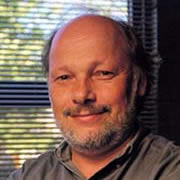
Dr. Michael Wiescher is presently the director of the Joint Institute of Nuclear Astrophysics (JINA) and Freimann Professor of Physics at the University of Notre Dame. JINA is funded as a NSF Physics Frontier Center between the University of Notre Dame, Michigan State University , the University of Chicago , and Argonne National Laboratory to address critical questions about the origin of heavy elements in nature or nuclear processes on compact stellar objects. Prof. Wiescher is a Fellow of the American Physical Society and was awarded the Hans A. Bethe Prize in 2003 jointly by the Division of Astrophysics & Division of Nuclear Physics of the American Physical Society. He has been serving on the US National Academies Board on Physics and Astronomy and the Advisory Board of the National Research Council of Canada in recent years. Prof. Wiescher’s present research interests span from nucleosynthesis scenarios during late stellar evolution to the fate of matter on accreting white dwarfs and neutron stars. His research program concentrates both, on laboratory measurements as well as computer simulation of the associated nuclear reactions and reaction sequences driving stellar evolution and stellar explosion. Michael Wiescher received his physics diploma at the University of Münster, Germany in 1974. For his graduate studies he turned to the field of nuclear astrophysics and got his PhD in 1980 at Münster as a student of Claus Rolfs. His interests evolved in time from experiments exploring the Carbon-Nitrogen-Oxygen cycle in stellar hydrogen burning to a wide panorama of experimental studies at stable beam, radioactive beam, and neutron beam facilities. Theoretical simulations of various nucleosynthesis processes guide the direction of his experimental program. Wiescher developed a pioneering scientific program of close collaboration between nuclear physicists and astrophysicists within the highly interdisclipinary field of nuclear astrophysics. More information about Prof. Michael Wiescher and his research can be found at http://physics.nd.edu/people/faculty/michael-wiescher/
(1)Nuclear Astrophysics Seminar: The Origin of Elements, the Engine of Stars, 12noon-1:30pm, Science 103
Abstract: The talk will present a broad overview of present experimental questions in nuclear astrophysics, covering quiescent burning during stellar evolution as well as explosive burning in core collapse supernovae and cataclysmic binary stars. Experimental needs as well as new facility developments are presented.
2) Physics and Astronomy Colloquium: Nuclear Physics Applications, 4-5pm, Science 127
Abstract: The talk will provide an overview of a wide range of nuclear physics and accelerator applications for nuclear energy, nuclear forensics, nuclear medicine, material science and art and archaeology. The nuclear physics group at Notre Dame has developed a number of classes covering the underlying physics principles of these applications. The talk will present a general overview with a number of examples of applied research work performed at the Nuclear Science Laboratory at Notre Dame and elsewhere
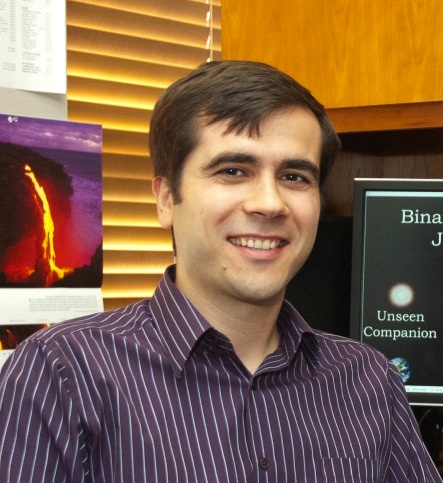
Prof. Kilic received his PhD in Astronomy from the University of Texas at Austin in 2006 with a university-wide outstanding dissertation award and his bachelor degree in Physics from Bogazici (Bosphorus) University in 1999 in Istanbul, Turkey. He worked as a Columbus Fellow at the Ohio State University between 2006 and 2008, and as a Spitzer Fellow at the Harvard-Smithsonian Center for Astrophysics (CfA) between 2008 and 2011. Last April, Dr. Kilic was awarded the Paul Hertelendy prize for outstanding young scientist at the CfA for his work on short period binary white dwarf stars. Dr. Kilic is interested in identifying the progenitors of Type Ia supernovae explosions as well as the formation and the fate of planetary systems around Sun-like stars. More information about Prof. Kilic and his research can be found at
http://www.nhn.ou.edu/ouresearch/faculty/BioKilic.shtml
Abstract:
The identity of Type Ia Supernovae (SNe) Progenitors is one of the key open questions in astrophysics. Mergers of binary white dwarf stars are one of the proposed channels for the formation of SNe Ia. Short period binary white dwarfs may merge within a Hubble time due to gravitational wave radiation. We have begun a targeted survey to find merging white dwarf systems, and our first results have tripled the number of known systems. Our sample includes tidally distorted and eclipsing systems with orbital periods as short as 12 minutes and with merger times less than 1 Myr. These systems are among the strongest known gravitational wave sources. I will discuss the characteristics of this sample and potential links to Type Ia and underluminous supernovae.

Dr. Ward joined the Baylor faculty as Distinguished Professor of Physics and the Chair of the Physics Department in August, 2003 and he remains at Baylor as Distinguished Professor of Physics. Prior to coming to Baylor he taught at University of Tennessee, Knoxville (1986-2003), Purdue University (1975-1978) and Princeton University (1973); he was a theoretical post-doctoral research associate at Stanford University (1973-1975) and a visiting scientist there from 1978 – 2002. He has been a regular Short-Term Visitor to the TH Division, CERN, Geneva, Switzerland, during 1986 -- 2010. He obtained his B.Sc. degrees in mathematics and physics from MIT prior to receiving his M.A. and Ph.D. degrees in physics from Princeton University. He was a Visiting Professor at the Werner-Heisenberg-Institut, Max-Planck-Institut fuer Physik, Munich, Germany during 2001 – 2002. He is a Fellow in the American Physical Society and is currently Co-Editor-in-Chief of The Open Nuclear and Particle Physics Journal. He has international collaborations with colleagues in Germany, Poland, Russia and India. He has written over 260 papers with more than 4900 citations that have generated over $2 Million in competitive, outside peer reviewed funding for his research.More information about Prof. Ward and his research can be found at here.
Abstract:
We present the current status of the application of our approach to exact amplitude-based resummation in quantum field theory to two areas of investigation: the precision Quantum ChromoDynamics (QCD) calculations as needed for Large Hadron Collider (LHC) physics and the resummed quantum gravity realization of Feynman's formulation of Einstein's theory of general relativity. We discuss recent results as they relate to experimental observations. There is reason for optimism in the attendant comparisons of theory and experiment.

Dr. Bulgac is a professor of physics at the University of Washington in Seattle. He received his PhD in 1977 from the Leningrad Nuclear Physics Institute, Academy of Sciences of USSR He worked in Romania from 1977 to 1983 as a research scientist and a lecturer before joining the University of Pennsylvania as a research associate in 1986. Prof. Bulgac was on the physics faculty at Michigan State University from 1988 to 1993 before moving to the University of Washington in Seattle. His main research interests are in atomic physics, nuclear physics, astrophysics and computational sciences, in particular, quantum many-body theory and its applications in various subfields of physics and astronomy. Using the most powerful supercomputer available for open science, as reported in the Jun 10, 2011 issue of Science <http://www.sciencemag.org/content/332/6035/1288.abstract>, Prof. Bulgac and his collaborators have recently devised a theoretical framework that explains the real-time behavior of superfluids that are made of fermions – subatomic particles such as electrons, protons and neutrons that are basic building blocks of nature. More information about Prof. Bulgac and his research can be found at http://www.phys.washington.edu/users/bulgac/
A note on superfluid. NASA photo: A 2001 photo from the space shuttle shows a phenomenon called von Karman vortices in clouds downwind from Rashiri Island in the northern Sea of Japan. The vortices are similar to those that form in superfluids. It has been 100 years since the discovery of superconductivity, a state achieved when mercury was cooled, with the help of liquid helium, to nearly the coldest temperature achievable to form a superfluid that provides no resistance to electrons as they flow through it. During that century, scientists have struggled to find a precise mathematical explanation of why and how this strange fluid behaves as it does. Liquid helium-4 itself becomes a superfluid when cooled to within a few degrees of absolute zero on the Kelvin scale (minus 273 Celsius or minus 460 Fahrenheit), and the resulting lack of viscosity allows it to seem to defy gravity, flowing up and over the sides of a container. More information about Prof. Bulgac’s recent work on superfluid can be found here.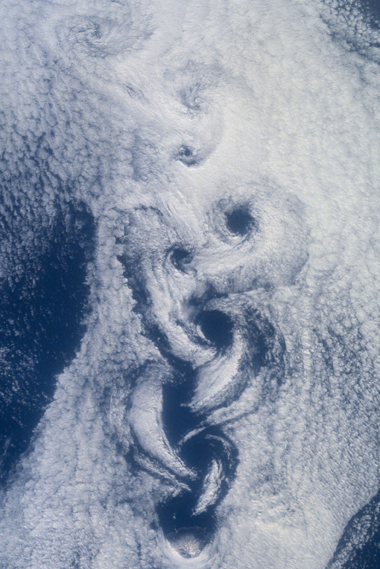
Abstract:
We introduce a comprehensive theoretical framework for the fermionic superfluid dynamics, grounded on a local extension of the time-dependent density functional theory. With this approach, we describe the generation and the real-time evolution and interaction of quantized vortices, the large-amplitude collective modes, as well as the loss of superfluidity at high flow velocities. We demonstrate the formation of vortex rings and provide a microscopic description of the crossing and reconnection of quantized vortex lines in a fermion superfluid, which provide the mechanism for the emergence of quantum turbulence at very low temperatures. We observe that superfluidity often survives when these systems are stirred with velocities far exceeding the speed of sound.
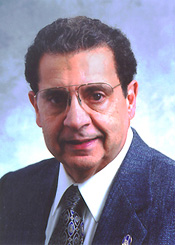
George W. Kattawar, is an internationally renowned expert in optics and a Professor of Physics & Astronomy and a member of the world-renowned Texas A&M Institute for Quantum Science and Engineering (IQSE). He earned his bachelor's of science degree from Lamar University with highest honors and received both his master's of science and PhD degrees from Texas A&M University on a National Defense and Education Act Fellowship. Before coming to Texas A&M, he held positions at Los Alamos Scientific Laboratory, Esso Production Research and the University of North Texas. His research interests span the gamut of optics and applied physics and have resulted in significant contributions in such diverse areas as biomedical optics, radiative transfer in planetary atmospheres, ocean optics, cloud property studies related to global warming, invisibility cloaking using metamaterials, ultrashort laser propagation in water, anthrax detection, and camouflage in cephalopods. In addition to being the author or co-author of nearly 200 publications in scholarly journals, he is co-inventor on three patents with two more pending. He has won several awards such as Fellow of the Optical Society of America, 1976; Amoco Foundation Teaching Excellence Award, 1981; Teacher/Scholar Award, 1990; and most recently received the Distinguished Texas Scientist Award for 2011 given by The Texas Academy of Science. He was also elected for two, three-year terms on the Committee on Recommendations for U.S. Army Basic Scientific Research under the National Research Council. He is a former Associate Editor of the Journal of Geophysical Research: Oceans and a former Associate Editor of the Journal of Transport Theory and Statistical Physics. He was selected to be editor of the SPIE Milestone Series on “Multiple Scattering in Plane Parallel Atmospheres and Oceans: Techniques”. He was recently selected (2009) to serve on the External Advisory Board of the Stevens Institute of Technology to assess their engineering and science programs. He has also been a major consultant to the Navy for several secret projects related to National Defense. In addition to his many invited talks at both national and international meetings, he is constantly being invited to give colloquia and popular talks. More information about Prof. Kattawar and his research can be found here.
Abstract:
Long before the dawn of man, both terrestrial and marine animals have used polarized light for such things as navigation (employed by the marvelous honeybee), foraging, mating, identification, and survival. We will give examples of the exciting ways these phenomena are used by various organisms. A brief history of the use of polarized light by man and its subsequent use in remote detection of bioaerosols, hidden targets, and even skin cancer will be presented. The latest discovery of the mysterious use of circularly polarized light (used in 3D movie glasses) by the mantis shrimp, with the most sophisticated eye structure in all of nature, will be discussed as well as the use of linear polarization by cephalopods (octopus, squid, and cuttlefish) to aid in their masterful camouflage capabilities.
Plasma-Based Particle Accelerators: There’s Plenty of Room at the Bottom
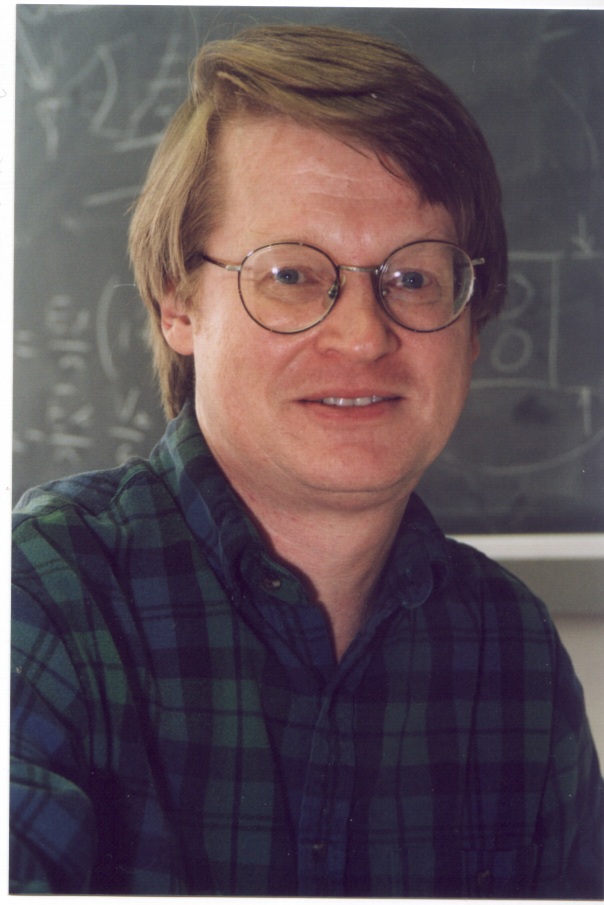
Dr. Mike Downer is College of Natural Sciences Distinguished Professor of Physics and Distinguished University Teaching Professor at the University of Texas at Austin. He earned a Ph.D. in 1983 from Harvard University. During postdoctoral work at AT&T Bell Laboratories, he contributed to the early development of femtosecond light sources and spectroscopy. Since joining the faculty at the University of Texas in 1985, he has supervised 30 Ph.D. and 20 M.S. dissertations on topics ranging from laser-plasma particle accelerators to nonlinear optical spectroscopy of semiconductor interfaces. He has published over 130 articles in refereed journals. Professor Downer has served as Topical Editor of the Journal of the Optical Society of America B, and Chair of the Quantum Electronics and Laser Science conference and the Advanced Accelerator Concepts workshop. He is a Fellow of the American Physical Society and the Optical Society of America. More information about Prof. Downer and his research can be found at http://www.ph.utexas.edu/~femtosec/
Abstract:
Over the past five years, compact plasma-based particle accelerators have advanced sufficiently that it is no longer a pipe dream to imagine a free-electron laser in every major university in the world [1], or proton cancer therapy on a scale that many hospitals could afford. I will survey recent experimental highlights in the field that make these hopes more realistic than even a few years ago. I will then focus on new holographic visualization techniques that my group has developed that enable experimenters to take “snapshots”, [2] or even “movies”, [3] of the electron density (Langmuir) waves that lie at the heart of plasma-based accelerators. Such 4D visualization, previously available only from intensive computer simulations, helps physicists understand how plasma-based particle accelerators work, and how to make them work better.
[1] K. Nakajima, “Towards a table-top free electron laser,” Nature Physics 4, 92 (2008).
[2] N. H. Matlis et al., “Snapshots of laser wakefields,” Nature Physics 2, 749 (2006).
[3] “Streak cameras: in the frequency-domain,” Research Highlight in Nature Photonics 5, 68 (2011).

Dr. Will Newton received in 2008 his DPhil from the University of Oxford, UK where he studied properties of neutron stars and the supernova equations of state. He also received his Masters in Physics from the University of Oxford, UK in 2000 and a research master degree (MSc) in 2002 from the University of Tennessee where he modeled giant resonances in Argon isotopes in collaboration with physicists at the Oak Ridge National Laboratory. He joined the Department of Physics and Astronomy at Texas A&M University-Commerce first as a postdoc in Sept., 2008 and then an Interim Assistant Professor. Dr. Newton’s current research interest is in nuclear physics, astrophysics and the connections between the two, especially in the exploration of dense matter in supernovae and neutron stars. He is particularly interested in linking observable properties of neutron stars and supernovae to properties of nuclear matter such as the incompressibility and symmetry energy that are potentially measurable in terrestrial nuclear laboratory experiments.
Abstract:
Pulsars are some of the most accurate clocks in the universe, the 'ticks' being a lighthouse-like radio beam periodically sweeping across the Earth. It is believed that the radio beam originates from the magnetic poles of a rotating neutron star. Most isolated pulsars are observed to exhibit a persistent spin down - their rotational frequency slowly decreases over time - as their magnetic field exerts a torque on the star; the star's rotational kinetic energy is powering the radiation beam. Every few months to years, however, certain pulsars have been observed to undergo sudden spin-up events, increasing their rotational frequency on timescales of less than minutes, before reverting to their secular spin-down evolution; such events are referred to as glitches. The currently favored class of glitch models involve two dynamically distinct components of the neutron star, usually taken to be the superfluid neutrons in the core and inner crust, and the rest of the star (the crystal lattice of the crust and charged components of the core). The two components can rotate differentially, with a sudden coupling between the two at a critical lag frequency enabling the transfer of angular momentum between them. Such models involve a complex amalgamation nuclear physics, superfluid hydrodynamics and general relativity; I will review the basic ideas behind the models, how well they describe observations, present results from our contributions to such models, and ask the all important question: can we hope to establish with any certainty what the glitch mechanism is?
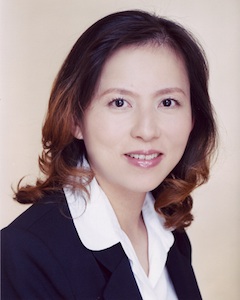
Dr. Ching-Hwa Kiang is an associate professor of Department of Physics & Astronomy and Department of Bioengineering at Rice University. She received her Ph.D in 1995 from California Institute of Technology, and joined Rice University faculty in 2002. She works in the area of nanomanipulation of single biomolecules and carbon nanotubes. She and her co-workers at IBM discovered single-walled carbon nanotubes in 1993. This discovery has opened a door for modern nanoscience development. Her current research focuses on single-molecule manipulation and nanobiology. She uses atomic force microscope to stretch proteins and DNA to study their dynamic states and interactions. She is the recipient of 2007 Best of Small Tech Researcher of the Year award and is an elected fellow of the American Physical Society. More information about Prof. Kiang and her research can be found at http://www.chkiang.rice.edu
Abstract:
Single-molecule manipulation studies open a door for a close-up investigation of complex biological interactions at the molecular level. In these studies, single biomolecules are pulled while their force response is being monitored. The process is often nonequilibrium, and interpretation of the results has been challenging. We used the atomic force microscope to pull proteins and DNA, and determined the equilibrium properties of the molecules using the recently derived nonequilibrium work theorem. The force signature provides a tool for us to examine the mechanochemistry of many complex systems such as multimeric mechanical proteins and protein-nucleic acid complexes. I will present applications of the technique in areas ranging from fundamental biological problems such as DNA mechanics, to complex medical processes such as the mechanical activation of von Willebrand Factor, a key protein in blood coagulation. I will conclude the talk with a discussion on applications and future challenges of this single-molecule approach to biology and medicine.
References:
1. Phys. Rev. Lett. 105 (2010) 218104
2. Phys. Rev. Lett. 99 (2007) 068101.
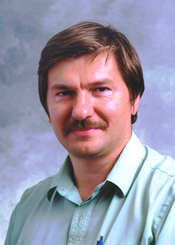
Prof. Rostovtsev received his Ph.D in 1991 from the Institute of Applied Physics, Russian Academy of Sciences, Nizhny Novgorod, Russia.Prof. Rostovtsev was a researcher at the Institute of Applied Physics from 1991 to 1996, a NATO postdoc at Texas A&M University from1996-1998 and then a research professor there from 1998-2009. He joined the physics faculty at the University of North Texas in 2009. More information about Prof. Rostovtsev and his research can be found at https://faculty.unt.edu/editprofile.php?pid=1817&onlyview=1#1
Abstract:
Recent progress in ultrashort, e.g. attosecond, laser technology allows researchers nowadays to obtain ultra-strong fields which can be the same order of magnitude as the electric field created by an atomic nucleus. Interaction of such strong and broadband field with atomic systems even under the action of a far-off resonance strong pulse of laser radiation should be revisited and as we have shown that such pulses can excite remarkable coherence on high frequency transitions. We have found and analyzed analytical solutions for various pulse shapes. We discuss the carrier-envelope phase (CEP) effects and possible applications of obtained results to cooperative generation of XUV and nuclear radiation. We compare our approach to short-wavelength high-harmonic generation. For a sample with density of atoms or ions of the order of 10e16-10e19 cm-3, the density of excited nucleus can be as much as 10e2-10e5 cm-3, and all nuclei that are coherently oscillating in phase produce a cooperative burst of gamma-ray radiation 10-1000 times shorter than the relaxation time, 100 ns for 57Fe.

Dr. Tran is currently an assistant professor in the Texas A&M Department of Physics and Astronomy and a member of the George P. and Cynthia Woods Mitchell Institute for Fundamental Physics and Astronomy. She received her doctorate in astronomy and astrophysics from the University of California at Santa Cruz and Lick Observatory in 2002, joined the Texas A&M faculty in January 2009. Her research focuses on understanding how galaxies form and evolve as a function of environment. By combining imaging from space-based facilities such as the Switzer and Hubble Space Telescopes with observations from ground-based facilities such as the Magellan and Very Large Telescopes in Chile, Prof. Tran studies galaxies over a wide range in redshift -- observations that are essential in separating the "Nature versus nurture" aspect of galaxy evolution.
Abstract:
Galaxy clusters are the largest gravitationally bound systems in the universe and include the most massive galaxies in the universe; this makes galaxy clusters ideal laboratories for disentangling the nature versus nurture aspect of how galaxies evolve. Understanding how galaxies form and evolve in clusters continues to be a fundamental question in astronomy. The ages and assembly histories of galaxies in rich clusters test both stellar population models and hierarchical formation scenarios. Is star formation in cluster galaxies simply accelerated relative to their counterparts in the lower density field, or do cluster galaxies assemble their stars in a fundamentally different manner? To answer this question, I review results from our Switzer/MIPS Infra-Red Cluster Survey (SMIRCS; 0<z<1) and present first results for one of the most distant clusters yet discovered at a look-back time of nearly 10 billion years (z=1.62).

Prof. Edward Brown earned a Ph.D. in 1999 from the University of California, Berkeley, under the supervision of Prof. Lars Bildsten. Upon graduating, Brown was awarded an Enrico Fermi Fellowship at the University of Chicago, where he worked in the ASC Center for Thermonuclear Astrophysical Flashes. In 2004, Brown moved to Michigan State University to join the Physics and Astronomy faculty, with a joint appointment in the National Superconducting Cyclotron Laboratory. He is affiliated with the Joint Institute for Nuclear astrophysics, an NSF Physics Frontier Center. Brown studies compact stars (neutron stars and white dwarfs), stellar explosions, and nuclear processes in astrophysics. Samples of recent work can be found on his research page
http://www.pa.msu.edu/~ebrown/home/Research/Research.html
Abstract:
Neutron stars are composed of the densest observable matter in nature and occupy the intellectual frontier between gravitational physics, astrophysics, and nuclear physics. Within the next decade, current and planned nuclear experiments, X-ray observations, and, perhaps, gravity wave observations of neutron stars will be exploring the nature of dense matter from complimentary approaches. Many observed neutron stars accrete hydrogen- and helium-rich matter from a companion. During the slow compression to nuclear density the accreted matter is transmuted from being proton-rich to being proton-poor. These reactions affect many observable phenomena -- from energetic explosions on the neutron star's surface to the recently detected thermal relaxation of the surface layers -- that in turn inform us about the nature of the deep interior of the neutron star. In this talk, I shall describe the journey of matter that is accreted onto a neutron star and describe what we can learn about the physics of the dense matter of the neutron star's crust and core by observing phenomena powered by nuclear physics on the neutron star's surface.
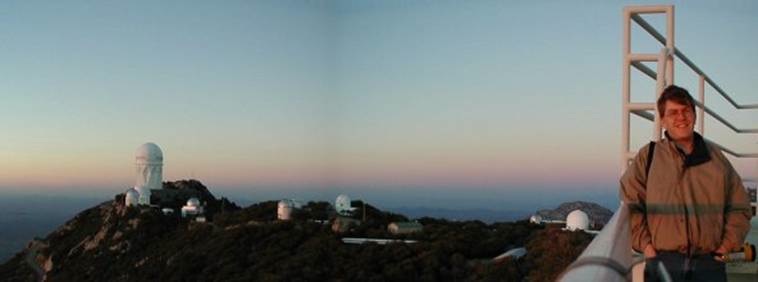
Dr. Kurtis Williams is a new faculty member at Texas A&M University – Commerce. He studied astronomy and physics as an undergraduate at Penn State University, after which he spent a year as a Fulbright Scholar at the Max Planck Institute for Extraterrestrial Physics in Garching, Germany. He earned his doctorate in Astronomy & Astrophysics from the University of California Santa Cruz in 2002. He then was a postdoctoral research at Steward Observatory in the University of Arizona and a National Science Foundation Astronomy & Astrophysics Postdoctoral Fellow at the University of Texas in Austin. His research interests are widely varied, and have included X-ray astronomy, white dwarfs and stellar evolution, gravitational lensing, and galaxy evolution.
Abstract:
White dwarfs are the final state of stellar evolution for the vast majority of stars ever formed, and are ever-cooling remnants of their progenitor star's central nuclear reactor. As such, white dwarfs are an ideal observational probe of the end stages of the stellar life cycle. In this talk, I will first present our latest results in understanding the relationship between white dwarf masses and the masses of their progenitor stars. Second, I will discuss the numerous mysteries surrounding a rare type of white dwarf, those with carbon-dominated atmospheres. Finally, I will outline a new project to determine the age of the thick disk and halo of the Milky Way galaxy using data from a recently-completed survey of the northern sky.
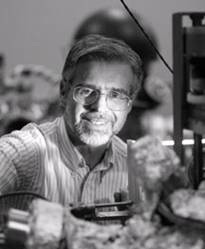 Yves Chabal holds a Texas Instrument Distinguished University Chair in Nanoelectronics at the University of Texas at Dallas. He obtained a BA in Physics from Princeton University in 1974, and a Ph.D. in Physics from Cornell University in 1980. He then joined Bell Laboratories where he developed sensitive spectroscopic methods to characterize surfaces and interfaces. He worked at Murray Hill, New Jersey, from 1980 until 2002 for AT&T, Lucent Technologies (1996) and Agere Systems (2001) in the Surface Physics, Optical Physics and Materials Science departments. In 2003, he joined Rutgers University as Professor in Chemistry and Biomedical Engineering, where he expanded his research into new methods of film growth (atomic layer deposition), bio-sensors, and energy (hydrogen storage). He directed the Laboratory for Surface Modification, an interdisciplinary Center to promote large initiatives. Yves joined UT Dallas in January 2008 to lead the Materials Science and Engineering department in the Erik Jonsson Engineering School. This department is located in the new Natural Science and Engineering Research Laboratory building, where interdisciplinary research is carried out among several departments (Biology, Chemistry, Physics, Electrical Engineering, Brain Science, and Medical Research). Yves is a Fellow of the American Physical Society and the American Vacuum Society, received a Bell Laboratories Affirmative Action Award (1994), an IBM faculty award (2003), the Rutgers Board of Trustees Award for Excellence in Research (2006), and the Davisson-Germer Prize (2009), and the Tech Titan Technology Innovator Award in 2010. He is the author of more than 330 publications (>12,500 citations), 10 book chapters, several patents and the editor of a book on the Fundamental Aspects of Silicon Oxidation. More information about Prof. Chabal and his research can be found at http://mse.utdallas.edu/people/chabal.html
Yves Chabal holds a Texas Instrument Distinguished University Chair in Nanoelectronics at the University of Texas at Dallas. He obtained a BA in Physics from Princeton University in 1974, and a Ph.D. in Physics from Cornell University in 1980. He then joined Bell Laboratories where he developed sensitive spectroscopic methods to characterize surfaces and interfaces. He worked at Murray Hill, New Jersey, from 1980 until 2002 for AT&T, Lucent Technologies (1996) and Agere Systems (2001) in the Surface Physics, Optical Physics and Materials Science departments. In 2003, he joined Rutgers University as Professor in Chemistry and Biomedical Engineering, where he expanded his research into new methods of film growth (atomic layer deposition), bio-sensors, and energy (hydrogen storage). He directed the Laboratory for Surface Modification, an interdisciplinary Center to promote large initiatives. Yves joined UT Dallas in January 2008 to lead the Materials Science and Engineering department in the Erik Jonsson Engineering School. This department is located in the new Natural Science and Engineering Research Laboratory building, where interdisciplinary research is carried out among several departments (Biology, Chemistry, Physics, Electrical Engineering, Brain Science, and Medical Research). Yves is a Fellow of the American Physical Society and the American Vacuum Society, received a Bell Laboratories Affirmative Action Award (1994), an IBM faculty award (2003), the Rutgers Board of Trustees Award for Excellence in Research (2006), and the Davisson-Germer Prize (2009), and the Tech Titan Technology Innovator Award in 2010. He is the author of more than 330 publications (>12,500 citations), 10 book chapters, several patents and the editor of a book on the Fundamental Aspects of Silicon Oxidation. More information about Prof. Chabal and his research can be found at http://mse.utdallas.edu/people/chabal.html
Abstract
Future devices for biomedical and energy applications are likely to use hybrid organic/inorganic junctions. Semiconductor substrates are often used because they are particularly appropriate for electronic sensing and photo-electric or voltaic devices. For instance, field-effect transistors (FETs) are being developed as biosensors, wherein the electric field induced by the attachment of a charged biomolecule onto an organic self-assembled monolayer (SAM) results in a change of the FET drive current. Similarly, attachment of light-absorbing molecular groups or nanoparticles on a SAM-covered semiconductor surface is being considered for high efficiency photovoltaic devices. In all cases, the performance of such hybrid devices critically depends on the quality and stability of the organic/semiconductor interface. In this talk, we suggest that the formation of SAM on oxide-free silicon surfaces can lead to higher chemical stability and electrical performance than on oxidized silicon surfaces that are currently used. It is known that hydrogen-terminated surfaces are ideal starting point for such oxide-free organic functionalization, but the functionality (i.e. versatility) of current SAMs is limited when simple hydrosylisation methods are used. Chemical functionalization of H-terminated silicon is therefore critical to further developments. We present new results that greatly facilitate the grafting of a variety of molecules directly on Si, using both wet-chemical and gas-phase methods. For instance, we show that it is possible to form fluorine or hydroxyl terminated Si surfaces by simple HF etching or water immersion without formation of silicon oxide, and that F-terminated Si surfaces can be used for easy “snap-on” chemistry. An essential ingredient for this process is alcohol, although not for the experimenter!
To request a change to this page or to request access to make changes yourself, email helpdesk@tamuc.edu.

